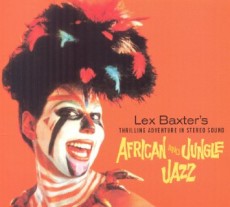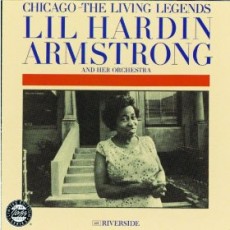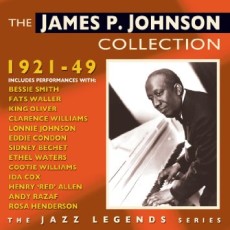
Daily Dose Of Jazz…
Manny Klein was born Emmanuel Klein on February 4, 1908. Not much is known about his youth and trumpet education but he began with Paul Whiteman in 1928. Active throughout the 1930s, he played with several major bands of the era including the Jimmy Dorsey, Tommy Dorsey and Benny Goodman.
By 1937 Klein had moved to California and worked with Frank Trumbauer’s orchestra and in early 1940 he appears on Artie Shaw And His Orchestra recordings. During this period he also did soundtracks and though received no credit, played trumpet for the film From Here To Eternity, and worked with musicians associated with West Coast cool jazz in the 1950s.
A versatile player who could play in almost any setting, including first trumpet in an orchestra, classical and pop, appearing on several Dean Martin recordings during the 1960s, and played piccolo trumpet on Hugh Montenegro’s hit version of the main theme to the film, The Good, the Bad and the Ugly.
Regarded as one of the most proficient players of his, or any generation, he possessed an uncanny ability to mimic the styles of many other prominent trumpeters, namely Bunny Berigan and Ziggy Elman. Trumpeter Manny Klein, most associated with swing, passed away at the age of 86 in Los Angeles, California on May 31, 1994.
More Posts: trumpet

Daily Dose Of Jazz…
Lil Hardin Armstrong was born Lillian Hardin on February 3, 1898 in Memphis, Tennessee and grew up with her grandmother learning hymns, spirituals and classics on the piano, but she was drawn to pop music and later blues. Her initial piano instruction came from her third grade teacher, Miss Violet White, followed by enrollment in Mrs. Hook’s School of Music, but it was while attending Fisk University that she was taught a more acceptable approach to the instrument.
In 1918, Lil moved to Chicago and landed a job as a sheet music demonstrator at Jones Music Store for $3 a week. Shortly afterward bandleader Lawrence Duhé offered her $22.50 she joined him. From cabaret to the De Luxe Café to Dreamland playing behind Alberta Hunter and Ollie Powers. Replace by King Oliver’s Creole Jazz Band, he asked her to stay, which led to an engagement in San Francisco, back to Chicago playing eventually with Oliver again.
Hardin met Louis Armstrong when Oliver sent for him and subsequently were married in 1924. She took him shopping and taught him how to dress more fashionably, and finally convinced him to strike out on his own. Moving to New York City he joined Fletcher Henderson, while she stayed in Chicago with Oliver and then leading her own band.
Hardin, Armstrong, Kid Ory, Johnny St. Cyr and Johnny Dodds comprised the Hot Five recordings for Okeh Records. She would go on to record sessions with the same group as a leader for Vocalion, Columbia Records and New Orleans Wanderers. In the late 1920s Hardin and Louis parted ways and she formed a band with a cornet player she considered Louis equal, Freddie Keppard. In the 1930s, she sometimes billed herself as Mrs. Louis Armstrong, led an All Girl Orchestra, then a mixed-sex big band, which broadcasted nationally over the NBC radio network.
The same decade she recorded a series of sides for Decca Records as a swing vocalist, recorded with Red Allen, and back in Chicago collaborated with Joe Williams, Oscar Brown Jr., Red Saunders and Little Brother Montgomery. Throughout the rest of her career she continued to perform and record, and began writing an autobiography that she never completed. A month after attending Louis’ funeral in New York City, she was performing at a televised memorial concert for Louis, Lil Hardin Armstrong collapsed at the piano and died on the way to the hospital.
Pianist, composer, arranger, singer and bandleader Lil Hardin Armstrong, second wife and recording collaborator of Louis Armstrong in the 1920s, passed away on August 27, 1971. Her compositions have been sampled and revived by many and was inducted into the Memphis Music Hall of Fame in 2014.

Daily Dose Of Jazz…
Stanley Getz was born on February 2, 1927 in Philadelphia, Pennsylvania but moved to New York City with his parents during The Depression. In school he was a straight A student finishing 6th grade close to the top of his class but his major interest was in musical instruments, and he felt a need to play every instrument in sight.
He played a number of them before his father bought him his first saxophone at the age of 13 and began practicing eight hours a day. Attending James Monroe High School, got accepted in the All City High School Orchestra of New York City, giving him a chance to receive private, free tutoring from the New York Philharmonic’s bassoonist, Simon Kovar.
By 1943 at age 16, he was accepted into Jack Teagarden’s band, becoming his ward because of his age. Getz also played along with Nat King Cole and Lionel Hampton, and after playing for Stan Kenton, Jimmy Dorsey, and Benny Goodman he became the Woody Herman’s soloist for two years in The Second Herd. Known as The Four Brothers alongside Serge Chaloff, Zoot Sims and Herbie Steward, he gained notoriety. Leaving Herman to strike out on his solo career, he led almost all of his recording sessions after 1950. However, it was during this period that having become involved with drugs and alcohol while a teenager, he was arrested in 1954 while attempting to rob a pharmacy to get a morphine fix.
Stan’s reputation was greatly enhanced by his featured status on Johnny Smith’s album Moonlight In Vermont and the single became a hit, staying on the charts for months. He went on to further popularity playing cool jazz with Horace Silver, Smith, Oscar Peterson and others. In his various bands were Roy Haynes, Al Haig, Tommy Potter, Dizzy Gillespie, Herb Ellis, Ray Brown and Max Roach.
In 1961 Getz became a central figure in introducing bossa nova to the American audience, teaming with guitarist Charlie Byrd who had just returned from Brazil. His album Jazz Samba with Charlie Byrd and Antonio Carlos Jobim became a hit, winning him a Grammy for Best Jazz Performance for Desifinado in 1963 that became his first million-copy seller. He would record Big Band Bossa Nova and Jazz Samba Encore! with Luiz Bonfa and get his second gold disc.
He recorded the album Getz/Gilberto with Jobim, Joao Gilberto and Astrud Gilberto winning two more Grammys for The Girl From Ipanema. What could have been a long partnership with his love affair with Astrud Gilberto, moving him away from bossa nova and back to cool jazz. By 1972, he recorded in the fusion idiom with Chick Corea, Tony Williams and Stanley Clarke.
In the mid-1980s he worked regularly in the San Francisco Bay area and taught at Stanford University as an artist-in-residence at the Stanford Jazz Workshop. In 1986, he was inducted into the Down Beat Jazz Hall of Fame. Tenor saxophonist Stan Getz died of liver cancer on June 6, 1991.
More Posts: saxophone

Daily Dose Of Jazz…
James P. Johnson was born James Price Johnson on February 1, 1894 in New Brunswick, New Jersey and was also known as Jimmy Johnson. A move to San Juan Hill, where Lincoln Center stands today, and subsequent move uptown by 1911, exposed him to the musical experience of New York City’s bars, cabarets and symphonies and listening to Scott Joplin attributed to his early influences. With perfect pitch and excellent recall he was soon able to pick out on the piano tunes that he had heard.
Johnson got his first job as a pianist in 1912, left school to pursue his career in music. From 1913 to 1916 Johnson spent time studying the European piano tradition with Bruto Giannini, spending the next four to five years studying other pianists and composing his own rags. In 1914, he met Willie “The Lion” Smith and became best friends. By 1920 he had gained a reputation as a pianist on the East coast on a par with Eubie Blake and Lucky Roberts, making dozens of piano roll recordings and recording for the Perfection, Artempo, Rythmodik, QRS and Aeolian labels.
James was a pioneer in the stride playing of the jazz piano. He developed into the favorite accompanist of Ethel Waters and Bessie Smith. He continued to compose and record during the 1920s and 1930s he recorded on W. C. Handy’s Black Swan label as well as Columbia. He branched out and became musical director for the revue Plantation Days, went to Europe with the show that toured for five years and made it to Broadway.
By the Depression Era his career slowed down somewhat and he found it difficult to adapt to the new swing era music gaining popularity. In the late 1930s Johnson slowly started to re-emerge with the revival of interest in traditional jazz, but suffering a stroke in 1940 took him out of the action until 1942 when he began to record, with his own and other groups with Eddie Condon, Yank Lawson, Sidney de Paris, Sidney Bechet, Rod Cless and Edmond Hall. He went on to record for jazz labels Asch, Black and White, Blue Note, Commodore, Circle and Decca, perform with Louis Armstrong and was a regular guest on the rudi Blesh This Is Jazz broadcasts.
He would teach Fats Waller his Carolina Shout composition, Duke Ellington learned it note for note from his piano roll and the tune became a right of passage for every contemporary pianist. Considered the last major rag pianist and the first major jazz pianist he became the bridge between the two styles. His influence led to the emergence of Art Tatum, Donald Lambert, Louis Mazetier, Pat Flowers, Cliff Jackson, Hank Duncan, Claude Hopkins, Count Basie, Ellington, Don Ewell, Jimmy Guarnieri, Dick Hyman, Dick Weststood, Ralph Sutton, Joe Turner, Neville Dickie, Mike Lipskin and Butch Thompson.
Pianist and composer James P. Johnson, who composed the Roaring Twenties theme song Charleston, along with If I Could be With You One Hour Tonight, and whose music has appeared in countless films, passed away on November 17, 1955 at age 61.
More Posts: piano


